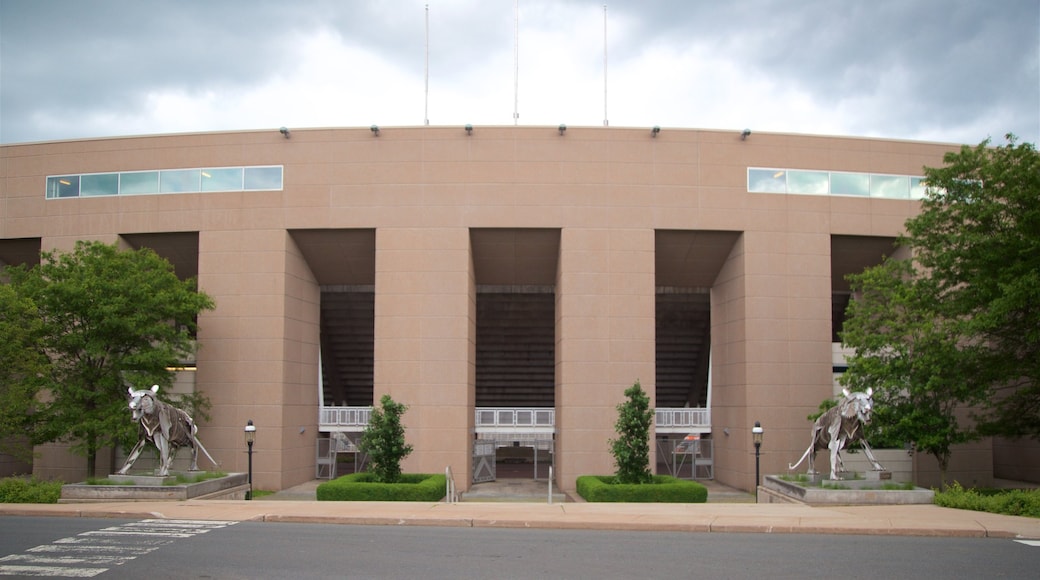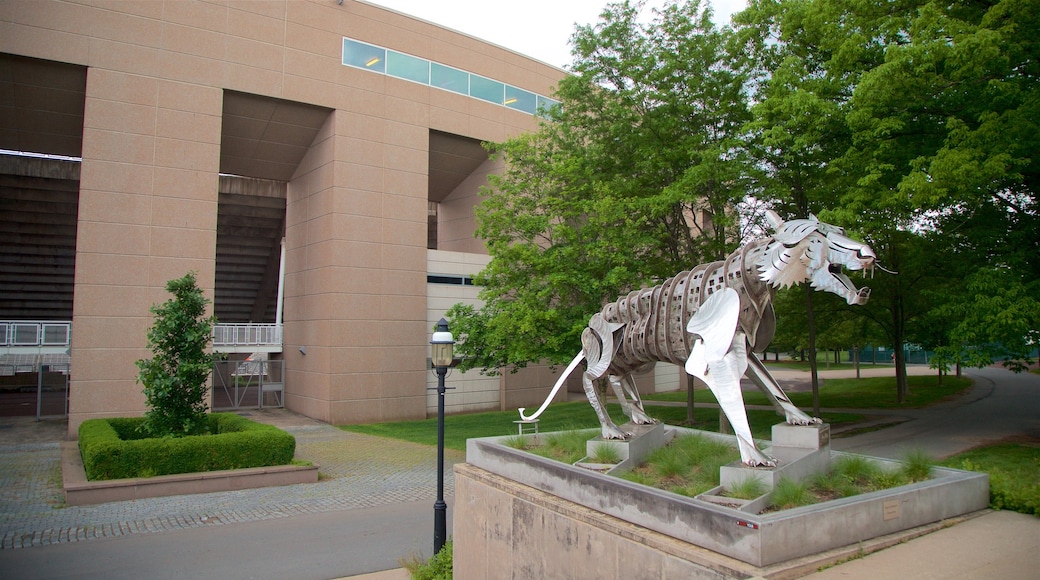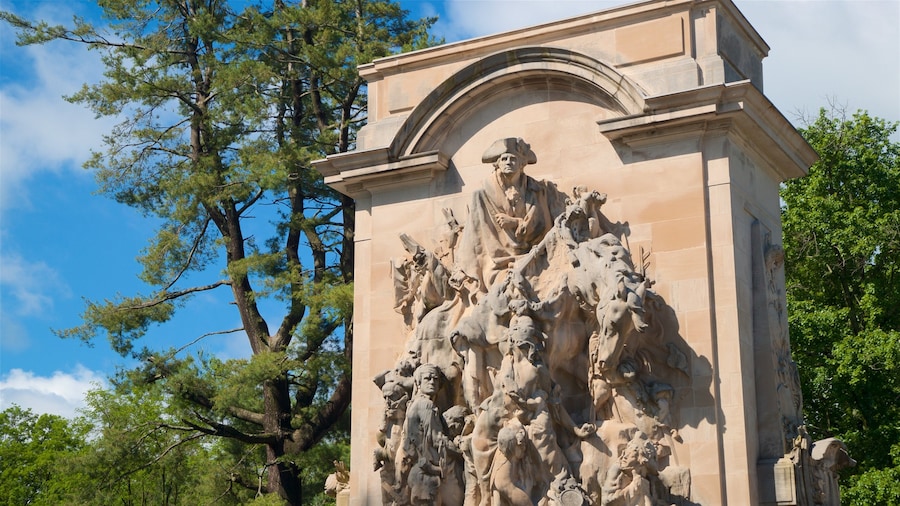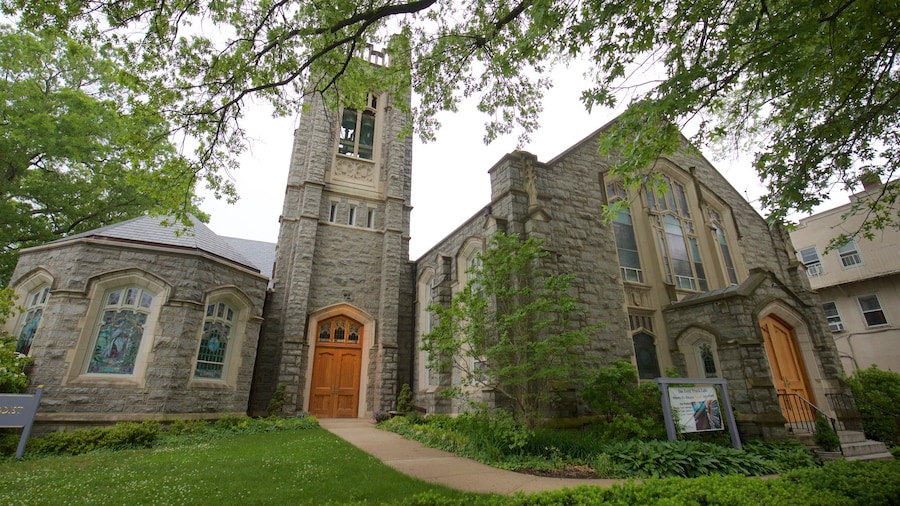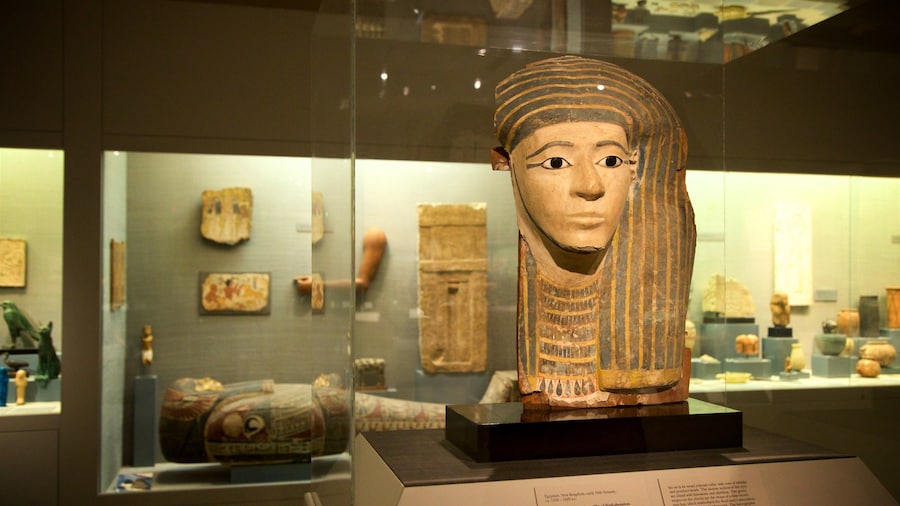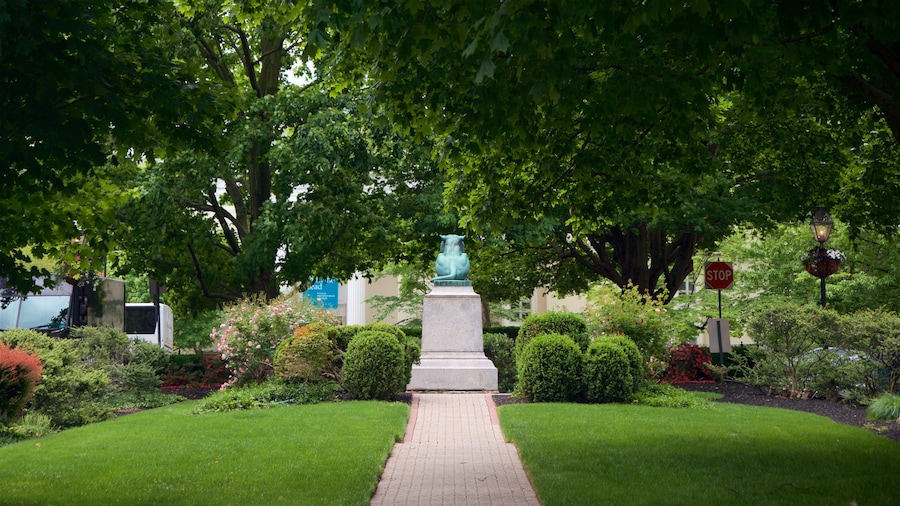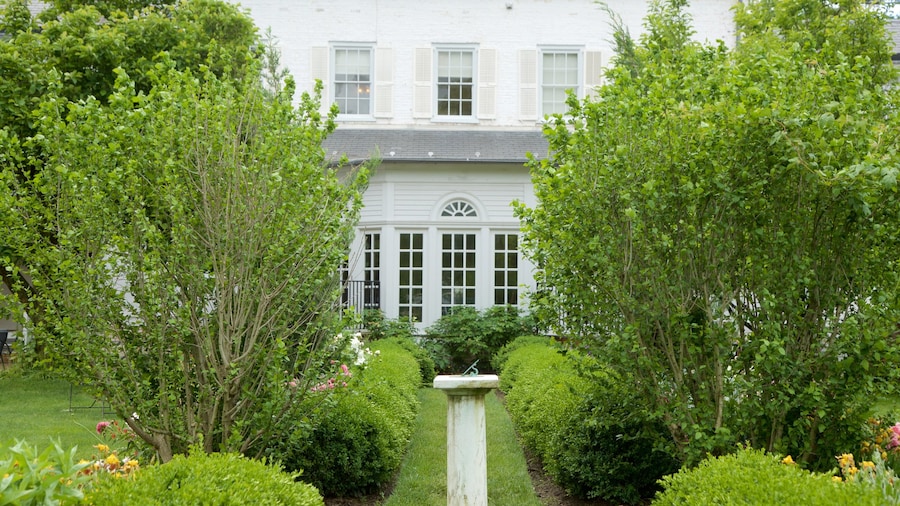Don your black and orange attire, practice the Princeton Cannon Song and cheer on the Princeton Tigers as they play a football game on their home turf.
There is no better place to experience Princeton’s school spirit than at Princeton University Stadium. The stadium serves as the home field of the Princeton Tigers, the university’s football team, which plays in the NCAA Division I league. Join a sea of fans clad in black and orange cheering them on during a game.
As you approach Princeton University Stadium, note the sculpture of a tiger, the university’s mascot, guarding its entry. Discover the storied history of the Princeton Tigers. On November 6, 1896, Princeton played against Rutgers University in the first intercollegiate football game in the United States. Although Rutgers prevailed that time, Princeton went on to build a powerful reputation in college football.
This stadium opened its doors in 1998. Its exterior mirrors the layout of Palmer Stadium, which hosted the Princeton Tigers from 1914 to 1996. Although the original stadium no longer stands, it does hold some important university records. For instance, track and field star Jesse Owens set the record for the long jump there in 1936, the same year that he won four gold medals in the Summer Olympics.
Note the appearance of Princeton Stadium. The unique horseshoe shape is modeled after the Panathenaic Stadium, the stadium built by the ancient Greeks about 330 B.C for the original Olympics.
The stadium can seat 27,800 spectators, over five times the size of Princeton University’s undergraduate population. Locate the press and luxury boxes on the west side of the stadium, above the upper deck.
Adjacent to the stadium, find an array of other athletic facilities. One of the stadium’s pillars houses a rock-climbing wall. The track, which is no longer located inside the stadium, is now directly south.
Princeton University Stadium is called Powers Field in honor of 1979 alumnus William C. Powers, a former All-Ivy punter for the Tigers. He made a very generous gift to Princeton's football program, which funded the stadium field’s playing surface. Look up to see if the building has a bubble-like roof. An anonymous benefactor recently donated funds to install this addition so that Powers Field can be used year-round.
